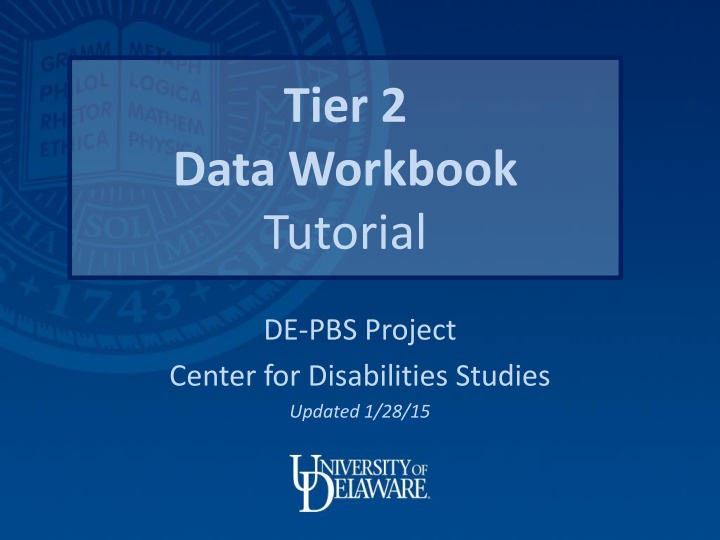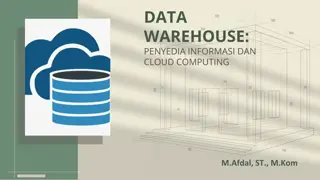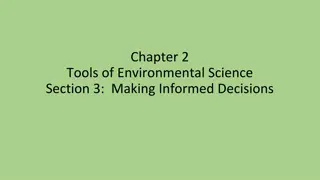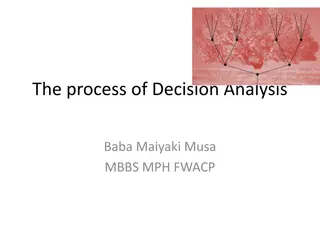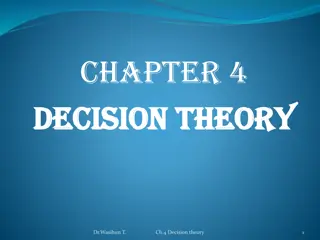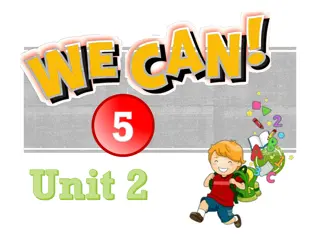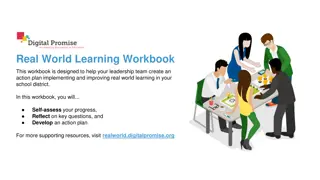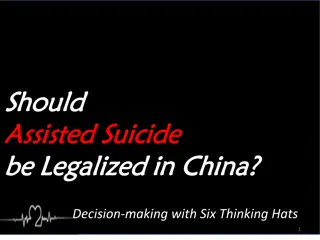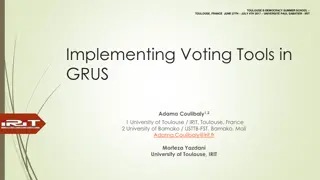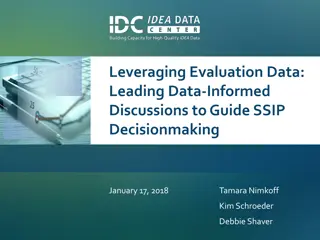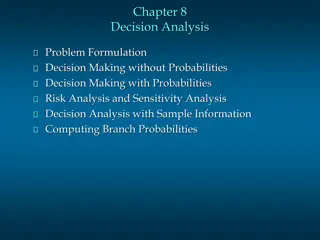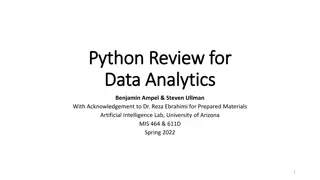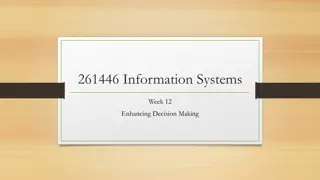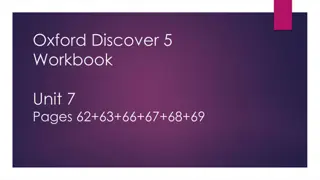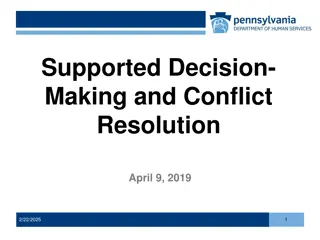Tier 2 Data Workbook Tutorial for Decision Making
This workbook tutorial provides guidance on effectively tracking and analyzing Tier 2 programming data to support decision-making processes. It outlines the importance of the workbook and its usability, offering insights on entering data, generating graphs, and optimizing interventions. The tool aims to streamline data collection and enhance understanding of Tier 2 programming impacts within educational settings.
Download Presentation

Please find below an Image/Link to download the presentation.
The content on the website is provided AS IS for your information and personal use only. It may not be sold, licensed, or shared on other websites without obtaining consent from the author.If you encounter any issues during the download, it is possible that the publisher has removed the file from their server.
You are allowed to download the files provided on this website for personal or commercial use, subject to the condition that they are used lawfully. All files are the property of their respective owners.
The content on the website is provided AS IS for your information and personal use only. It may not be sold, licensed, or shared on other websites without obtaining consent from the author.
E N D
Presentation Transcript
Tier 2 Data Workbook Tutorial DE-PBS Project Center for Disabilities Studies Updated 1/28/15
Why use this workbook: Help make important decision about your Tier 2 programming. Help others understand the important and extent of your Tier 2 programming. How to use this tool: Please review this Powerpoint and update your data monthly in this Excel workbook!
A quick orientation to this tool this is an Excel workbook but you don t need to be an Excel expert to use it! You will just need to enter some numbers and some text from your existing (and any new) Tier 2 intervention-related school activities into this workbook and we ll show you how and where! You can always copy and paste any tables and/or graphs from this workbook into other documents (like Word or Powerpoint).
22 Tabs to Help Outline Your Important Tier 2 Programming
Certain cells within these 2 tabs will require data/info entered by you (but some cells are locked )
The other 20 tabs are linked to the data/info you enter (they will generate graphs based on the data you enter)
Before using this workbook, youll need A list of your current Tier 2 interventions. This workbook allows you to track 10 interventions simultaneously. If you have more than 10, consider using one workbook to track behavioral interventions and another to track academic interventions. A monthly data collection method This workbook allows your Tier 2 team to track the %ages of students responding to those 10 interventions across each month of the SY (September-June). We recommend that schools designate a facilitator for each intervention who can collect and report this data monthly to the team leader(s), who would then enter it into this workbook. And (at least) the Responding criteria for each intervention As soon as possible, it is recommended that your team determine the entrance and exit criteria for each intervention, too. Interventions should be fluid and dynamic (and not holding pens for students).
Okay, now to start Please open the Excel file named: Tier 2 Intervention Tracking with Graphs ADD SCHOOL NAME and save the file on your computer by renaming it with your school name.
Step 1: Complete school information at the top of the AllData tab
Step 2: Add intervention names to worksheet There is space for up to 10 interventions. Special note: The intervention name you type in these boxes will automatically show up on all other worksheets that relate to that intervention in this workbook!
Step 3: Document Intervention Criteria B A. Select the second tab Criteria B. Define the entrance, responding, and exit criteria for each intervention (Interventions will self-populate based on the names entered on the AllData tab) A
Now that you have your basic intervention information saved you can start adding your monthly data!
Step 4: Each month, enter: - the # of students are participating in each intervention & -the # of students responding to each intervention.
Step 4: Each month, enter: - the # of students are participating in each intervention & -the # of students responding to each intervention. The percentage of students responding and not responding will automatically populate once the numbers are entered for each month.
Step 5: Examine your %ages to determine - which interventions are working (70% of students are responding, like CICO above) & - which interventions don t seem to be working in your current Tier 2 program (less than 70% of students are responding, like the Academic Remediation)
OR Examine your graphs to determine - which interventions are working (70% of students are responding, like CICO above) & - which interventions don t seem to be working in your current Tier 2 program (less than 70% of students are responding, like the Academic Remediation)
Monthly Graphs Special Notes: You cannot change the data in the graph worksheets (they are imported directly from the AllData worksheet). The orange tabs in this workbook provide you with graphs of the interventions by month. They show the percentage of students responding and not responding to all interventions per month. Each intervention and month tab shows the same graph twice, once in color and once in black and white.
Graphs per Intervention. Special Notes: You cannot change the data in the graph worksheets (they are imported directly from the AllData worksheet). The blue tabs in this workbook provide you with graphs of each interventions across the SY. shows the same graph twice, once in color and once in black and white. Each intervention and month tab They show the percentage of students responding and not responding to each intervention each month.
Step 6: For any interventions with low student responses (less than 70%), ask WHY. If an intervention is working for less than 70% of your enrolled students you need to talk about the intervention system. Your discussion may include questions about intervention fidelity and/or retraining in the intervention. - Conversations about individual students lack of response should be addressed in a separate, problem-solving, conversation
Thank you for reviewing this tutorial! For more information about Targeted (Tier 2) programming and tools, please visit our website at delawarepbs.org DE-PBS Project Center for Disabilities Studies Updated 1/28/15
